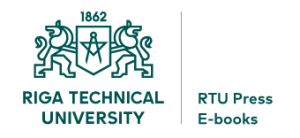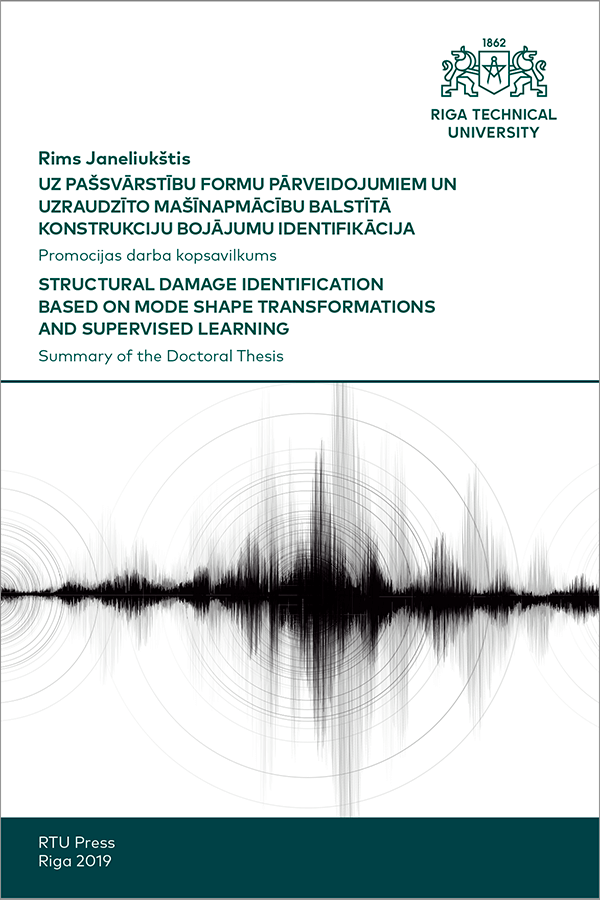Structural Damage Identification Based on Mode Shape Transformations and Supervised Learning
Summary of the Doctoral Thesis
Rims Janeliukštis, Riga Technical University, Latvia
![]() http://orcid.org/0000-0002-0374-5441
http://orcid.org/0000-0002-0374-5441
The present Thesis is devoted to development of structural damage localization methods in 1D (beams) and 2D (plates) metal and composite structural elements, as well as damage characterization in pre-stressed railway concrete sleepers.
The first part is based on mode shape transformation methods, such as continuous wavelet transform and mode shape curvature squares. The rationale behind using structural mode shapes is that they provide spatial information about the structure of interest. Mode shapes are measured using non-contact scanning laser vibrometer system. The scanning points serve as sensors in classical experimental modal analysis, hence the user has an advantage to easily adjust the resolution of mode shape by varying a density of the scanning grid. The extracted mode shapes of damaged structures are processed using the aforementioned transform techniques to reveal the location of damage. A new algorithm based on variance of normalized wavelet scalogram is developed for beam structures. This method provides the advantage over the conventional continuous wavelet transform in terms of not needing to select the most appropriate wavelet function and scale parameter for optimum damage localization performance. This part of the Thesis is conducted under the framework of the Latvia State Research Program under grant agreement “Innovative Materials and Smart Technologies for Environmental Safety, IMATEH”.
The second part of the Thesis is devoted to development of methods for structural defect localization based on supervised learning models. Studies involve the localization of pseudo-defect on a cantilevered carbon composite laminate plate and separation of acoustic emission sources in pre-stressed railway concrete sleepers under flexural loading.
The first step for the composite plate involves the extraction of resonant frequencies of the plate using experimental and numerical modal analyses. The extracted resonant frequencies are used as driving frequencies for harmonic excitation of the plate for inducing mechanical strains. A point mass is added on several zones of the plate and mechanical strains are recorded via strain sensors. The point mass serves as a pseudo-defect locally modifying mass of the structure and thus providing changes to structural response. The features sensitive to the position of added mass are extracted from strain time series and used to train classifiers based on k-NN and linear discriminant techniques. Trained classifiers are validated on unknown query points in terms of classifying the points as to belong to one of zones of the plate.
Acoustic emission parameters of the railway concrete sleepers are analysed and post-processed to be employed as damage-sensitive features for classification algorithms based on decision trees. Peak frequencies of acoustic emissions are also studied and a shift in these frequencies is observed with increasing distance from the largest density of cracking in the sleepers.
Additional information
| DOI | |
|---|---|
| Publication type | |
| Hyperlink | |
| Defence date | 17.05.2019. |
| ISBN (print) | 978-9934-22-280-1 |
| ISBN (pdf) | 978-9934-22-281-8 |
| Format | |
| Pages | 31 |
| Published online | |
| Publisher | RTU Press |
| Country of Publication | Latvia |
| Publication language |
You must be logged in to post a review.




Reviews
There are no reviews yet.